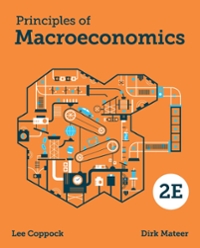Question
2. Healthcare- Mark's demand for doctor visit is given by p=120-q where p is the price per visit in a private medical system and q
2. Healthcare-
Mark's demand for doctor visit is given by p=120-q where p is the price per visit in a private medical system and q is the number of doctor visits per year. The marginal cost of each doctor visit is $40.
2.1 If Mark has to pay for health care from his own pocket, what is the efficient quantity of doctor visits he will consume? What is the total cost of his visits? Draw one diagram and mark all the important numbers in questions 2.1), 2.2) and 2.4) on the same diagram.
2.2 In Canada, doctor visits are provided for free to residents (ignoring the tax payment). Now if doctor visits are free, how many doctor visits will Mark take? What is the deadweight loss of this free provision of health care?
2.3 Comparing the outcomes in 2.1) and 2.2), what do we call the behavioural problem associated with Mark in situation 2.2)? List two possible policy instruments that the government can use to correct for this problem.
2.4 If the government now requires patients to pay 20% of the cost of doctor visits from their own pockets, how many visits to the doctor will Mark take now? What is Mark's out-of-pocket cost? How much does the government pay for these doctor visits?What is the new deadweight loss?
2.5 As a policy maker, do you think introducing a co-insurance fee (or a user fee) for doctor visits is a good policy in terms of efficiency and equity? Why? Please type the answer with listing points.
Step by Step Solution
There are 3 Steps involved in it
Step: 1

Get Instant Access to Expert-Tailored Solutions
See step-by-step solutions with expert insights and AI powered tools for academic success
Step: 2

Step: 3

Ace Your Homework with AI
Get the answers you need in no time with our AI-driven, step-by-step assistance
Get Started


